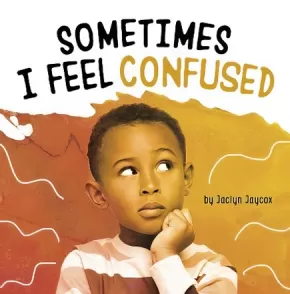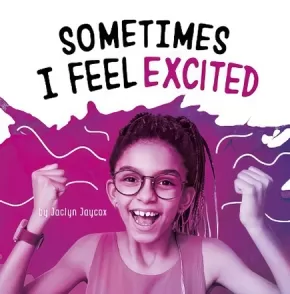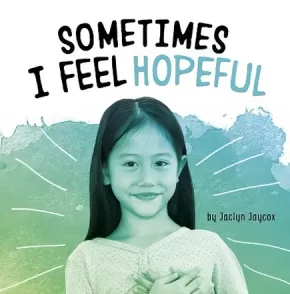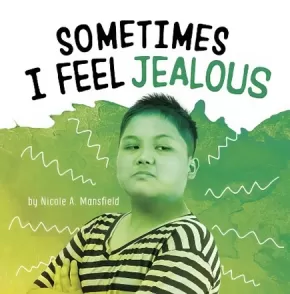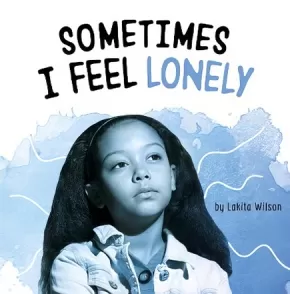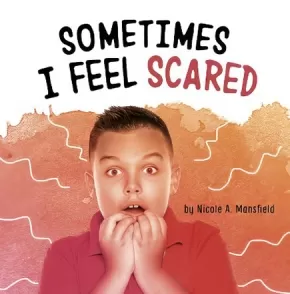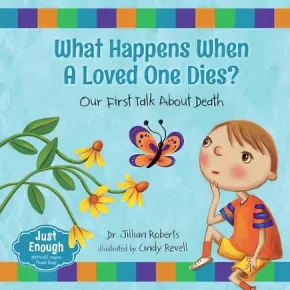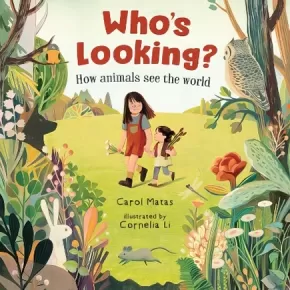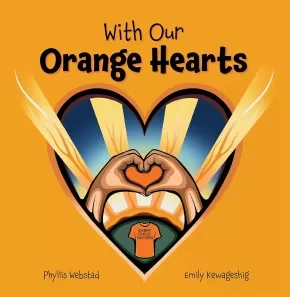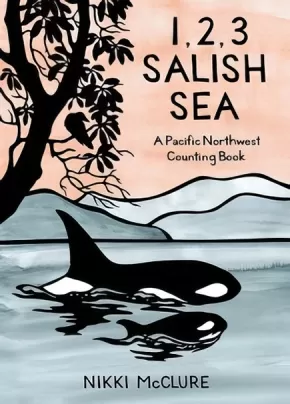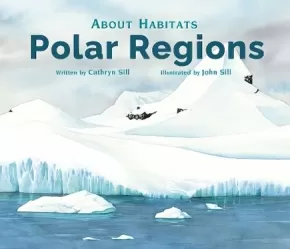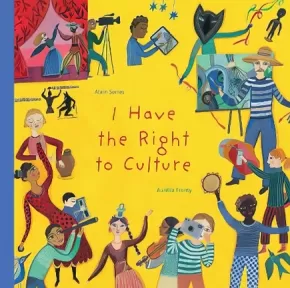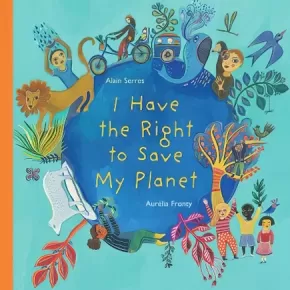
Nonfiction
91
-
105
of
203 Results;
Sort By
Go To
of 14
Sometimes I Feel Confused
$10.99
Format:
Paperback
ISBN / Barcode: 9781666326116
Synopsis:
Synopsis:
What does it mean to be confused? Confusion may not make us feel good, but it's an emotion everybody has! Children will learn how to identify when they are confused and ways to manage their feelings. Large, vivid photos help illustrate what confusion looks like. A mindfulness activity will give kids an opportunity to explore their feelings.
Educator & Series Information
Recommended for ages 5 to 8.
This book is part of the Name Your Emotions series.
Additional Information
24 pages | 8.00" x 8.00" | Paperback
Sometimes I Feel Excited
$10.99
Format:
Paperback
ISBN / Barcode: 9781666325874
Synopsis:
Synopsis:
What does it mean to be excited? Everyone feels excited sometimes! Children will learn how to identify when they are excited and ways to manage their feelings. Large, vivid photos help illustrate what excitement looks like. A mindfulness activity will give kids an opportunity to explore their feelings.
Educator & Series Information
Recommended for ages 5 to 8.
This book is part of the Name Your Emotions series.
Additional Information
24 pages | 8.00" x 8.00" | Paperback
Sometimes I Feel Hopeful
$10.99
Format:
Paperback
ISBN / Barcode: 9781666325959
Synopsis:
Synopsis:
What does it mean to be hopeful? Feeling hopeful is an emotion everybody has! Children will learn how to identify when they are hopeful and ways to manage their feelings. Large, vivid photos help illustrate what hopefulness looks like. A mindfulness activity will give kids an opportunity to explore their feelings.
Educator & Series Information
Recommended for ages 5 to 8.
This book is part of the Name Your Emotions series.
Additional Information
24 pages | 8.00" x 8.00" | Paperback
Sometimes I Feel Jealous
$10.99
Format:
Paperback
ISBN / Barcode: 9781666325478
Synopsis:
Synopsis:
What does it mean to be jealous? Jealousy may not make us feel good, but it's an emotion everybody has! Children will learn how to identify when they are jealous and ways to manage their feelings. Large, vivid photos help illustrate what jealousy looks like. A mindfulness activity will give kids an opportunity to explore their feelings.
Educator & Series Information
Recommended for ages 5 to 8.
This book is part of the Name Your Emotions series.
Additional Information
24 pages | 8.00" x 8.00" | Paperback
Sometimes I Feel Lonely
$10.99
Format:
Paperback
ISBN / Barcode: 9781666326031
Synopsis:
Synopsis:
What does it mean to be lonely? Loneliness may not make us feel good, but it's an emotion everybody has! Children will learn how to identify when they are lonely and ways to manage their feelings. Large, vivid photos help illustrate what loneliness looks like. A mindfulness activity will give kids an opportunity to explore their feelings.
Educator & Series Information
Recommended for ages 5 to 8.
This book is part of the Name Your Emotions series.
Additional Information
24 pages | 8.00" x 8.00" | Paperback
Sometimes I Feel Scared
$10.99
Format:
Paperback
ISBN / Barcode: 9781666326192
Synopsis:
Synopsis:
What does it mean to be scared? Being scared may not make us feel good, but it's an emotion everybody has! Children will learn how to identify when they are scared and ways to manage their feelings. Large, vivid photos help illustrate what being scared looks like. A mindfulness activity will give kids an opportunity to explore their feelings.
Educator & Series Information
Recommended for ages 5 to 8.
This book is part of the Name Your Emotions series.
Additional Information
24 pages | 8.00" x 8.00" | Paperback
What Happens When a Loved One Dies?: Our First Talk About Death
$14.95
Artists:
Format:
Paperback
Grade Levels: Preschool; Kindergarten;
ISBN / Barcode: 9781459831858
Synopsis:
Synopsis:
Whether children are experiencing grief and loss for the first time or simply curious, it can be difficult to know how to talk to them about death.
Using questions posed in a child’s voice and answers that start simply and become more in-depth, this book allows adults to guide the conversation to a natural and reassuring conclusion. Additional questions at the back of the book allow for further discussion.
Reviews
"Death is explained in an age-appropriate way...The text, which has a story book quality, is soothing and, above all, is suitable to this age level. The book has extra questions at the end which can even reach a bit older audience in covering other related topics in the concept of death. In spite of what is a grim and serious topic, Revell’s watercolour illustrations are colorful, lively and child-like, with nature and the child’s surroundings playing a large role. Her drawings feature a variety of ethnicities and families which lends depth to this topic. Kudos to Dr. Jillian Roberts for tackling a serious issue in such an accessible way. The author brings with her years of experience in this area, as both a teacher and a child psychologist."— CM Magazine
"Designed for adults to share with very young children, this gentle informational text begins with the part death plays in the natural world and goes on to answer the questions of children who lose grandparents...[The author] reassures young listeners that it's normal to be sad and offers ways to cope with grief...Revell's digitally painted illustrations support the text...consciously multicultural...A boon for families with young children."— Kirkus Reviews
"This helpful book...employs simple, yet truthful, responses that either immediately satisfy or give children additional tools for articulating more specific questions...An excellent choice for preschools as well as libraries."— Booklist
Educator & Series Information
Child psychologist Dr. Jillian Roberts designed the Just Enough series to empower parents/caregivers to start conversations with young ones about difficult or challenging subject matter. Other books in the series deal with birth, diversity, separation and divorce.
Recommended for ages 3 to 5
Additional Information
32 pages | 8.50" x 8.50" | Paperback
Who's Looking?: How Animals See the World
$21.95
Artists:
Format:
Hardcover
ISBN / Barcode: 9781459826762
Synopsis:
Synopsis:
How do animals see the world? It turns out, very differently.
In this nonfiction picture book, a young girl and her baby sister's outdoor adventure (hiking through the forest, picnicking in the grass and swimming in the ocean) is overseen by the local fauna. The way those animals view the girls is very different from how the girls see each other. Goats see far and wide in a panorama, whales don't see color the way humans do and a high-soaring eagle's sharp vision can clearly see a tiny mouse far below. Through clever illustrations and scientific prose, we are reminded that while we may see things differently, we all share this life together on planet Earth.
Reviews
"Well-organized, succinct, child-friendly and inquisitive…An eye-opening STEAM picture book. Highly Recommended.” — CM: Canadian Review of Materials
Educator Information
Recommended for ages 3 to 5.
Additional Information
32 pages | 10.00" x 10.00" | Hardcover
With Our Orange Hearts (PB)
$10.99
Format:
Paperback
Text Content Territories:
Indigenous Canadian; Inuit; First Nations; Salish; Interior Salish; Secwepemc (Shuswap); Stswecem'c Xgat'tem; Métis;
ISBN / Barcode: 9781989122976
Synopsis:
Synopsis:
"Every child matters, including you and me. With our orange hearts, we walk in harmony." As a young child, your little world can be full of big emotions. In this book, I, Phyllis Webstad, founder of Orange Shirt Day, show that sharing my story with the world helped me to process my feelings. My true orange shirt story encourages young children to open their hearts and listen as others share their feelings, and to be more comfortable sharing their own feelings too. Listening is a first step towards reconciliation. It's never too early to start.
Educator Information
Recommended for ages 2 to 6.
This book is available in French in paperback: Avec nos coeurs oranges
This book is available in English in hardcover: With Our Orange Hearts (HC)
Additional Information
24 pages | 8.00" x 8.00" | Paperback
1,2,3 Salish Sea: A Pacific Northwest Counting Book (1 in stock, Out of Print)
$19.95
Artists:
Format:
Hardcover
Grade Levels: Preschool; Kindergarten;
ISBN / Barcode: 9781459827370
Synopsis:
Synopsis:
From one to ten and beyond, explore the Salish Sea in this visually striking, high-concept counting primer. Acclaimed West Coast artist Nikki McClure uses a single piece of paper and an X-ACTO knife to create her simple yet exquisite images. Whether it's one stubby squid or one million raindrops, readers young and not-so-young will delight in this distinctly Pacific picture book.
Educator Information
Recommended for ages 3 to 5.
This book is a visually striking counting primer featuring marine life from one to ten with the addition of large numbers (20, 50, 100, 500, 1000, 10,000, 100,000).
Additional Information
32 pages | 6.50" x 9.00"
About Habitats: Polar Regions
$11.95
Artists:
Format:
Paperback
ISBN / Barcode: 9781682633342
Synopsis:
Synopsis:
This beginner's guide and classroom favorite explores the Arctic and Antarctic biomes, their beauty, and global diversity. From the creators of the award—winning About Habitats and About… series.
In this addition to the About Habitats series, former educator and author Cathryn Sill uses simple, easy-to-understand language to teach children what the Polar Regions are (from the frozen deserts of Antarctica to the ice floes of the Arctic Ocean) along with what kinds of animals and plants live there, how they have adapted to life in the environment, and why they're important.
Noted wildlife illustrator John Sill offers full—color illustrations depicting the various landscapes and species of animals and plants. A glossary and afterword provide further details. Great for early childhood and elementary units on geography and habitats, nature and environment.
The About Habitats series introduces children to specific habitats and their living and nonliving components. Each book in the series provides information about the nature and characteristics of the habitat while the full-page illustrations expand on that information.
Reviews
“A solid read-aloud to introduce young children to this area of the world.” ―School Library Journal
“Given the demand for informational picture books on Arctic and Antarctic regions and their wildlife, libraries will find this a particularly useful addition to the Sills’ handsome About Habitat series.” ―Booklist Online
“Easily accessible…” ― Horn Book Guide
Educator & Series Information
With simple text and language, and strong picture support (paintings), this non-fiction narrative teaches children what polar regions are and what kinds of animals and plants live there.
This book is a part of the About Habitats series, which introduces children to specific habitats and their living and nonliving components.
Recommended ages: 3-7
Additional Information
48 pages | 10.00" x 8.50" | Paperback
Bebikaan-ezhiwebiziwinan Nimkii: The Adventures of Nimkii
$30.00
Artists:
● Butzin Rachel (Indigenous;)
Format:
Hardcover
Text Content Territories:
Indigenous American; Native American; Anishinaabeg; Ojibwe (Chippewa); Indigenous Canadian; First Nations; Anishinaabeg; Ojibway;
ISBN / Barcode: 9781736551912
Synopsis:
Synopsis:
In this beautifully illustrated children’s book, readers will experience the world in a new way as they see the seasons through the joyful eyes of Nimkii, a fun, nature-loving dog who will teach them a whole new language: Ojibwemowin, a language spoken by the indigenous tribes in parts of Michigan, Ontario, northern Minnesota and Wisconsin, and Alberta.
Whether hunting for maple trees in the fall, playing in the snow in the winter, enjoying the spring showers, or swimming in the summer, Nimkii seeks out activities that allow her to enjoy her natural surroundings. Fun and inspiring, this bilingual book helps children and adults communicate in new ways while exploring different elements of culture.
Educator Information
Children's Literature
Dual-language: English and Ojibwemowin
Translated by Margaret Noodin, of the Pine Marten Clan.
Additional Information
38 pages | 11.00" x 8.50" | Hardcover
Forest Magic: A Guidebook for Little Woodland Explorers
$16.95
Artists:
Format:
Hardcover
ISBN / Barcode: 9781771089265
Synopsis:
Synopsis:
A beautifully illustrated, compact, interactive nature guide to exploring the forest for young readers.
What do you notice when you walk in the forest? Different types of trees, plants, and mushrooms? Maybe you hear a squirrel chattering or birds singing. Can you feel all the different kinds of moss? And look there! Hidden animal homes and interesting bugs.
With this compact non-fiction guide, young readers will be equipped to seek out, identify, and appreciate the woodland magic that exists all around them. Featuring rich vocabulary words like "nurse log," "lichen," and "sapling," this beautifully illustrated book is the ideal companion for little forest explorers. Incorporating all five senses and encouraging imaginative play, it even includes pixies and fairies (pixie cup lichen and fairy slipper wildflowers)! Forest Magic will be the book you reach for on the way out the door to explore your own backyard.
There's so much to see in a forest. What will you discover?
Educator & Series Information
Recommended for ages 4 to 8.
This book is part of the Little Explorers Series.
Additional Information
32 pages | 8.00" x 6.50"
I Have the Right to Culture
$19.99
Artists:
Format:
Hardcover
ISBN / Barcode: 9781773064901
Synopsis:
Synopsis:
From the author and illustrator duo who created the award-winning I Have the Right to Be a Child and I Have the Right to Save My Planet comes this beautifully illustrated third book in the series.
I Have the Right to Culture explores a child’s right to be curious and to experience all of humanity’s shared knowledge, including music, art, dance and much more. When a child is born, they learn the language of their parents, they sing the songs of their grandparents and they eat the delicious food that their family prepares. They also start to wonder about the lives of other children who live far away. What languages do they speak? What songs do they sing? And what games do they play?
Every child has the right to learn about the world they live in, including its history and its inventions. Every child has the right to learn about artists, about writers, about potters and photographers and architects, about musicians and dancers and poets. All of humanity’s treasures are for sharing, and every child has the right to know about what has come before them! Children have the right to partake in culture as proclaimed in the United Nations Convention on the Rights of the Child.
Told from the perspective of a child, this colorful and vibrant book explores what it means to be a child who has the right to find beauty in their world.
Educator & Series Information
Recommended for ages 3 to 6.
This book is part of the I Have the Right series.
Correlates to the Common Core State Standards in English Language Arts:
CCSS.ELA-LITERACY.RI.K.1
With prompting and support, ask and answer questions about key details in a text.
CCSS.ELA-LITERACY.RI.K.6
Name the author and illustrator of a text and define the role of each in presenting the ideas or information in a text.
CCSS.ELA-LITERACY.RI.K.7
With prompting and support, describe the relationship between illustrations and the text in which they appear (e.g., what person, place, thing, or idea in the text an illustration depicts).
CCSS.ELA-LITERACY.RI.1.8
Identify the reasons an author gives to support points in a text.
Additional Information
48 pages | 10.00" x 10.00" | Hardcover
I Have the Right to Save My Planet
$19.95
Artists:
Format:
Hardcover
ISBN / Barcode: 9781773064871
Synopsis:
Synopsis:
This beautifully illustrated picture book is about a child’s right to advocate for the environment they live in.
All children have the right to learn about the world, to celebrate the water, air and sunshine, and to be curious about the animals and plants that live on our planet. All children also have the right to learn about endangered species, to be concerned about plastic in the ocean, and to understand what a changing climate means for our Earth.
Scientists tell us that every living thing is connected. When we cut down forests, we destroy animal habitats. When we throw plastic in the garbage, it never really goes away. When we spray pesticides on our fruit and vegetables, we poison the earth, animals and ourselves.
What can children do to help? All children can draw posters of endangered animals to raise awareness. All children can send a letter to the leader of their country, signed by every member of their family. All children can protest along with their parents. Children have the right to do all these things as proclaimed in the United Nations Convention on the Rights of the Child. All children have the right to try to help our Earth, in whatever ways they can.
Told from the perspective of a child, this colorful and vibrant book explores what it means to be a child who dreams of a beautiful future for their planet.
Educator & Series Information
Recommended for ages 4 to 7.
Part of the I Have the Right series.
Correlates to the Common Core State Standards in English Language Arts:
CCSS.ELA-LITERACY.RI.2.3
Describe the connection between a series of historical events, scientific ideas or concepts, or steps in technical procedures in a text.
CCSS.ELA-LITERACY.RI.3.2
Determine the main idea of a text; recount the key details and explain how they support the main idea.
CCSS.ELA-LITERACY.RI.3.3
Describe the relationship between a series of historical events, scientific ideas or concepts, or steps in technical procedures in a text, using language that pertains to time, sequence, and cause/effect.
CCSS.ELA-LITERACY.RI.2.6
Identify the main purpose of a text, including what the author wants to answer, explain, or describe.
CCSS.ELA-LITERACY.RI.1.8
Identify the reasons an author gives to support points in a text.
CCSS.ELA-LITERACY.RI.2.8
Describe how reasons support specific points the author makes in a text.
Additional Information
48 pages | 10.00" x 10.00"
Sort By
Go To
of 14

